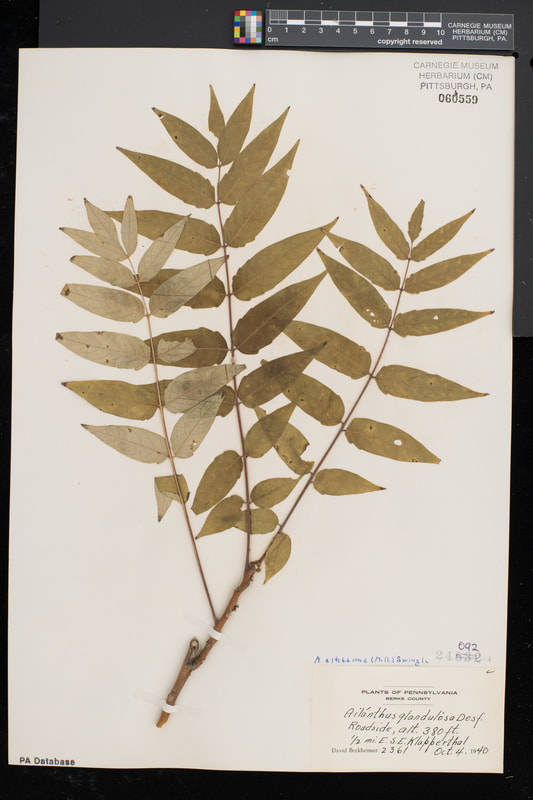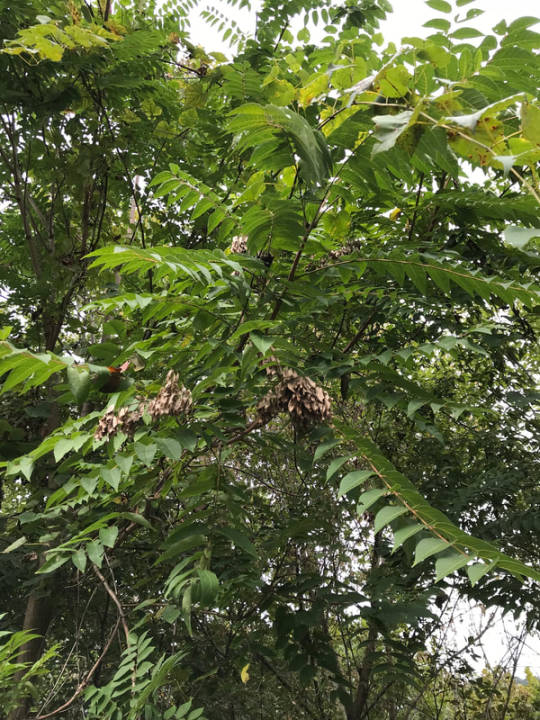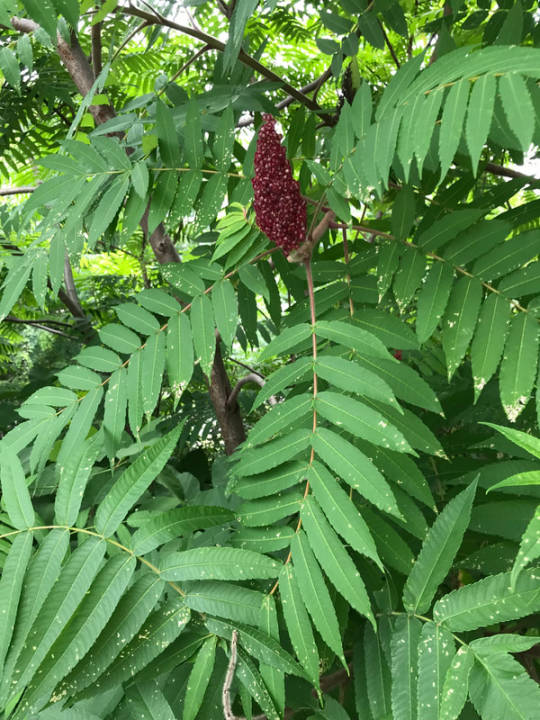
Loved and hated: An urban plant with history
”There’s a tree that grows in Brooklyn. Some people call it the Tree of Heaven. No matter where its seed falls, it makes a tree which struggles to reach the sky. It grows in boarded up lots and out of neglected rubbish heaps. It grows up out of cellar gratings. It is the only tree that grows out of cement. It grows lushly…survives without sun, water, and seemingly earth. It would be considered beautiful except that there are too many of it.“
-from Betty Smith’s classic novel, A Tree Grows in Brooklyn (1943)
(Fact check: the species is impressively resilient but does indeed require light and water. But we’ll let it slide with an artistic license here.)
This specimen of tree of heaven (Ailanthus altissima) was collected on October 4, 1940 by D. Berkheimer near Klapperthal in Berks county, Pennsylvania.
Tree of heaven (Ailanthus altissima) is a species with a fascinating and complex cultural history. It was once glorified as a beautiful urban street tree in the United States. It was tolerant of insects, pollution, and poor growing conditions. The earliest recorded planting in the US (via England) was at William Hamilton’s estate (currently the “Woodlands Cemetery”) in Philadelphia around 1784. It was also in Bartram’s famous garden nearby. It became popular in the plant nursery industry after 1820. But that feeling didn’t stay long, and within decades it was vilified as an unwanted weed – it had an unpleasant smell, produced prolific seeds, and resprouted from suckers causing it to spread. Today, it is a common urban “weed” found in urban and non-urban areas across the eastern US. It is considered invasive in Pennsylvania (and many other states). It is also considered invasive in many parts of Europe.
But where’s it from? Ailanthus altissima is native to East Asia, including China, Taiwan, and Korea. It has a deep ethnobotanical history in China, where it has been used in various ways in traditional Chinese medicine, with written records of its use dating to 732 AD! It also has deep roots in Chinese literature and culture. Among other uses, it has also been used in silk production, as it is a food host to a silkworm.
The oldest herbarium specimen from the Eastern US is undated but inferred to date from 1815-1831 from Philadelphia. It is in the herbarium of the Academy of Natural Sciences of Drexel University (PH). The second oldest Pennsylvania specimen is dated 1841, also from Philadelphia.
It is around this time of year that the abundance of Tree of Heaven in the Pittsburgh area becomes especially obvious, especially along roadsides. With large, compound leaves and found in disturbed, “weedy” areas, Ailanthus can be easily confused with the similar looking native tree, staghorn sumac (Rhus typhina). Staghorn sumac is in a different plant family (poison ivy family, Anacardiaceae), but this confusion goes way back. Linnaeus even described the species as in the same genus as sumac, so don’t feel too bad if you make the same mistake! (Side note – the taxonomic history of the species is also intense. It has been given many different scientific names over the past three centuries, with three people independently naming it at around mid-1700s!) The leaves are noticeably different upon closer inspection. The fruits are even more clearly different. Ailanthus has brown clusters of winged seeds (called samaras, like that of maple trees’ “helicopter” seeds). These seeds can be clearly seen now on trees as their leaves drop along most highways around Pittsburgh.


Given its introduction history in the Mid-Atlantic and its intentional planting and affinity for urban areas, the Mid-Atlantic Megalopolis Project will be important and fascinating to understanding more about this plant. The Mid-Atlantic Megalopolis Project is a specimen digitation effort involving more than 12 herbaria (including Carnegie Museum herbarium) funded by a National Science Foundation grant to database (put in computer), image (high res. pictures), and georeference (put on map) all specimens in the region. The region is significant because it is one the oldest densely populated urban corridors in the US, from New York City to Washington, D.C. The Mid-Atlantic Megalopolis Project is producing a critical dataset to look at the introduction history and invasive success (and failure) of species in urban and non-urban areas across this connected region – including Tree of Heaven and many other species.
This specimen image (and many other Tree of Heaven specimens in the region) are available online: http://midatlanticherbaria.org/portal/collections/list.php?db=328&taxa=Ailanthus+altissima&usethes=1&taxontype=2
The earliest specimen in southwestern PA at the museum was collected in 1881 in Beaver county.
For more on the species’ fascinating history and biology in our region, check out this detailed study by Dr. Matt Kasson and colleagues done at Penn State published in 2013 in Northeastern Naturalist.
Check back for more! Botanists at the Carnegie Museum of Natural History share digital specimens from the herbarium on dates they were collected. They are in the midst of a three-year project to digitize nearly 190,000 plant specimens collected in the region, making images and other data publicly available online. This effort is part of the Mid-Atlantic Megalopolis Project (mamdigitization.org), a network of thirteen herbaria spanning the densely populated urban corridor from Washington, D.C. to New York City to achieve a greater understanding of our urban areas, including the unique industrial and environmental history of the greater Pittsburgh region. This project is made possible by the National Science Foundation under grant no. 1801022.
Mason Heberling is Assistant Curator of Botany at the Carnegie Museum of Natural History. Museum employees are encouraged to blog about their unique experiences and knowledge gained from working at the museum.
